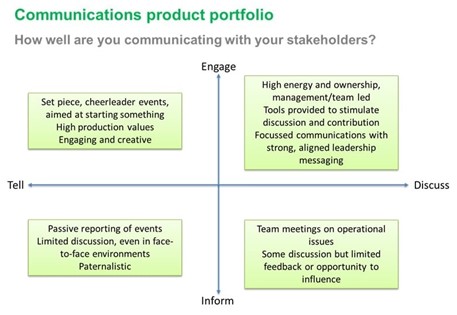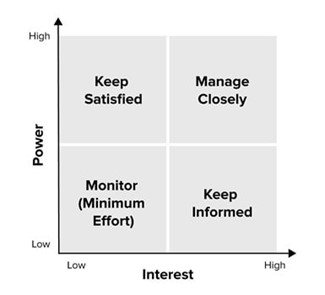It’s still pre-close. Your integration plan looks good, it’s nearly complete. You’ve anchored it with clear objectives and a specific description of the future Operating Model. You have management mechanisms defined, performance and risk monitoring, and benefits tracking in place.
Your leadership team has stepped into the design and planning. They are aware of what’s in store and committed to its successful delivery.
But what about everyone else? You will need the active employee engagement and unions, customers, suppliers, and often the local community. At minimum. Energizing and directing these groups requires much more than their awareness or even understanding. They must, as much as possible, actively want these changes and be willing to play key roles in making them happen.
This brings us to Change Management. While often maligned and even more often misunderstood, there is a vast body of knowledge and good practice available[1]. Alongside your detailed post-close plans, you need a Change & Engagement Plan. This plan starts from integration objectives and key milestones – it must be practical and action-oriented. Its design must ensure that key ‘stakeholder groups’ receive the information and feedback they need along the way. It should facilitate two-way dialogue as appropriate. The first elements of this plan[2] will include pre-close activities, so it must be in place weeks in advance of Day 1
Here are the guiding principles for successful change management :
- Actively involve people in designing the change – it’s the best way to gain their support (and to learn things yourself!)
Resistance to change largely comes from individuals’ sense of loss of control, a lack of agency. To restore that agency, give them a meaningful role in designing the change. An inclusive, workshop-based approach is mandatory. You won’t be able to involve everyone. That’s okay. You do, however, need to find ways to give people a voice in the process. Common examples include establishing employee and customer focus groups and using cross-organisation working teams to develop integration details. The focus groups provide feedback on ‘how it’s going’. The working teams maintain coordination and attention to detail. ‘Holistic’ and ‘integrated’ sound impressive. They are challenging to attain.
- People need to ‘know where they’re going,’ or they won’t set out:
o Why is change needed?
o What is the end goal (or at least, intermediate)?
o How will we reach this goal?
o What am I expected to do?
Sometimes referred to as the ‘4 P’s of Change’ – Purpose, Picture, Plan and Part – your planning provides much of what you need: Acquisition and Integration Benefits & Objectives explain Purpose; target Operating Model outlines the Picture; Integration Plans provide most of the rest. All Change Management activities, from deal announcement onward, should reinforce and test people’s understanding of and attitude toward the 4 P’s.
- Start from ‘me’ – People will only engage once they understand and accept what change means for them personally.
While you’re talking ‘big picture,’ your audience is looking closer to home. For them, the fourth P comes first! Before deploying flashy communications about how fantastic this deal will be for the business, STOP. Customers and employees will not listen until you’ve addressed their deeper, more urgent questions concerning changes and risks. These include changes to products and services, to their jobs and compensation, and even to the existence of their jobs. Even if you don’t have all details by Day 1, you must have honest, direct answers prepared.
- Change Management does not ‘equal’ communication.
Your goal is to manage change effectively. Communication, the right type and the right amount is important[3]. It is part of the program, but it’s not the only thing. Use all the change-management tools at your disposal in concert – employee participation, customer forums, change agents, quick-win programmes. Your objectives are engagement, commitment, and supportive actions. This leads us to…
- … communication is much more than just ‘telling.’ You know the importance of two-way communication. So, ensure that it is at the core of your programme. Include surveys, focus groups, and other mechanisms to ensure your key messages are heard, understood, believed, and translated into actions. Consider two critical dimensions of communication: informing minds vs. engaging emotions; and telling vs. discussing. Letting customers know about your new invoicing process is critical. But getting them excited about the new range of products you’re offering is, too. How will the integrated supply chain make it easier for plant managers to meet their personal objectives. Plan and organise your Change Management communications using the 2 x 2 chart below. Be sure to balance your communication approach.

Developing Your Change Management & Employee Engagement Plan:
Here is how to keep these principles in mind, step by step:
- ASSESS KEY STAKEHOLDERS: List the major groups that either need to do things or know things for the integration to succeed. Identify characteristics of each group:
– Who and where they are – organisationally and geographically;
– How and when the integration will affect them – benefits, problems;
– Their likely main questions and concerns (try asking them);
– What the integration team could learn from this group;
– The level of interest in the integration;
– What influence (power) they are likely to have on others in the business;
– How (and how frequently) they prefer to give and receive news and information.
Be sure to consider groups like the local community, the media, regulators, and trade unions. It can also be helpful to segment large groups like customers and employees into sub-groups with different profiles. It might help to plot each group on a Power/Interest matrix:

- DEVELOP KEY MESSAGES FOR EACH STAKEHOLDER GROUP: This is the ‘core content’ that each group will need to do its job successfully. Make sure these messages are consistent and clear. Test them both for clarity and for impact. A side benefit of honing these messages will be increasing clarity among your leaders regarding the overall programme and their roles.
- IDENTIFY THE COMMUNICATIONS ‘PRODUCTS’ MOST SUITABLE FOR EACH STAKEHOLDER GROUP: Use your Stakeholder Analysis from the first step and develop a list of channels or products most appropriate for each. Some will need regular town hall meetings, surveys, and focus groups, while others may only need a monthly or quarterly newsletter update. Different groups, companies and cultures have different expectations for communication. Be sure to balance the ‘expected’ approaches with new ones that will catch people’s attention. This product list should include materials to support deal announcement and Day 1 and to continue all the way through integration. You will need to react to changes during implementation, so any planning upfront simplifies reaction.
- ASSEMBLE THESE PRODUCTS INTO A CHANGE & ENGAGEMENT PLAN: Often this is no more complex than a calendar of products to be developed and conducted for each stakeholder group. This plan and its calendar must be owned by someone with specific accountability to ensure it is followed. That person (not a group!) must be able to keep it tightly aligned with integration activities and flexible to the unexpected. Manage a two-way process – integration changes should be reflected in communications and learning during communications could inform changes to your Integration Plan.
- PREPARE YOUR LEADERSHIP TEAM TO SUPPORT CHANGE & ENGAGEMENT: While your senior and middle management may need little support themselves, they are often not skilled or prepared to lead their teams through a change of this nature. Major events like M&A are relatively rare in most companies. Prepared middle-level leaders are vital: while communications can be centrally coordinated, it is actually accomplished ‘along the line.’ Management at all levels and your customer representatives will ultimately deliver the vast bulk of your plan. Briefings, training and coaching on change management can help them immensely in this role. Most will require practice and role-playing activities to sharpen critical skills and ensure consistent messaging.
You are now ready for the final step in preparing for integration: Ensuring you and your leadership team are ready for Day 1 and can conduct an effective Change of Control. In the penultimate post in the series, I’ll discuss this seventh step before completing the series with a look at how to manage your integration programme.
Suggested Reading
[1] I recommend several foundational books on Change Management: John Kotter’s Leading Change and William Bridges’s Managing Transitions are solid primers.
[2] pre-close planning includes deal announcement, Day 1 preparation, and contingencies for leaked information or misinformation.
[3] Frequently one hears, ’overcommunicate.’ Emphatically, no! Communication in the right measure is vital. Overcommunication only leads to confusion and ‘alarm fatigue.’

